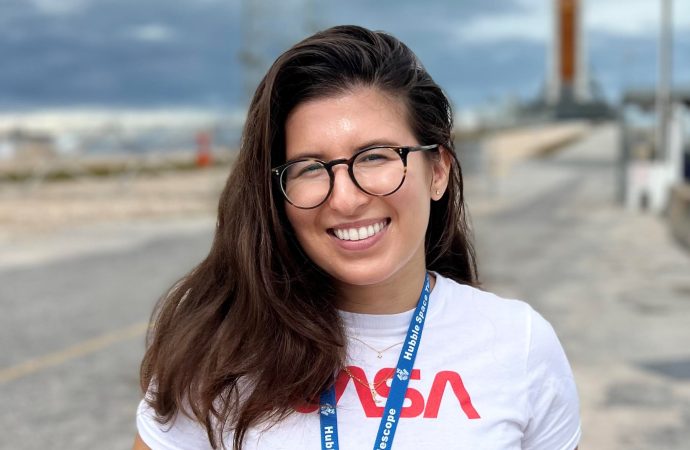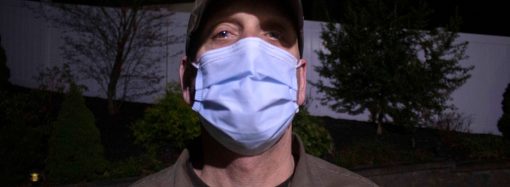By Stamatina Douzenis
My story starts when I was born to a family that could pass for characters of My Big Fat Greek Wedding. It was practically a rite of passage for me to be the family’s translator – constantly alternating between English and Greek during doctors’ visits, or while reading tax documents way above my level of understanding. What I didn’t know back then was that switching between languages would manifest to my love of translating science to layman’s terms.
Cue NASA, an aspiring science communicators dream! This past semester, I had the opportunity to work alongside the wonderful folks of the Heliophysics team helping with all things communications. Throughout the weeks, I would be tasked with creating original social media posts that have been disseminated predominantly to the NASA Sun Twitter. I really enjoy writing snappy and quick social media posts, which I discovered during my experience on the Hubble team in the spring of 2021.
My favorite tweet I was able to work on was one centered around sprites. If you have never been lucky to witness a sprite, let me explain. They appear like a reddish colored flash, occur high above thunderstorms and can vary in shape. This was a personal full circle moment for me, because I remember witnessing them during my childhood when I would visit my family in Greece, wondering what was happening in the night sky. No one knew or could give an explanation. Ironically enough, I was asked by the team to help with some Greek spelling during this time to credit the photographer of a sprite captured by video, right off the coast of Athens, Greece.
A longer form piece of writing that I accomplished this semester was a blog post for the Atmospheric Waves Experiment (AWE). I was not familiar with what these waves do or what causes them, so it was great to get to know the science. Weather disturbances like hurricanes for example, cause powerful waves to form and in understanding them, we can better forecast weather and climate.
Learning about the abstract world of Heliophysics proved to be a challenging task, however, I also got to get in on some of the action! The Artemis I live shots down at the Kennedy Space Center were one of the most incredible experiences I got to be a part of. I was able to interact with so many folks across different centers and even meet some people in person after being remote for the past two internship experiences at NASA Goddard. It was also so great to work alongside a fellow intern turned friend throughout both of our internship experiences.
In just two days – with tired eyes but full hearts – we were able to complete more than 100 interviews pre and post launch. I met NASA Administrator Bill Nelson, Deputy Administrator Pam Melroy, NASA Astronauts Jessica Meir and Christina Koch, Senior Scientist and Climate Advisor Dr. Katherine Calvin, Chief Exploration Scientist Dr. Jacob Bleacher and Senior Storyteller Liz Landau. We were all so exhausted but so energized to be helping get the story out. It was exhilarating!
Thanks to this experience, I get to also add that I am now on an astronaut’s social media. NASA Astronaut Christina Koch posted a group selfie with the live shot team on her Instagram and I think we all squealed a little when we saw it!
A perk of working the live shots was also being able to watch the launch from the press site and while I’ve only witnessed launches on the Space Coast from a 50-mile distance, this was just different. The power, the loudness, the brightness and vibrations we all felt were all just remarkable. What humanity is doing is incredible and historic!
The humans of NASA and the work that is being done is all so humbling and I’d say it’s the biggest reason why I keep coming back for more.
I also worked on a web feature for two CubeSats that launched not too long ago – SPORT and petitSat. They launched aboard the Falcon 9 on the Dragon spacecraft and will be deploying from the ISS later this month. Their main premise is to monitor plasma bubbles that form in the ionosphere – a layer of the Earth’s atmosphere. The formation of these blobs, cause bad communication signals and could be instrumental in the way we forecast space weather, increase communication navigation systems reliability and avoid massive power outages.
This piece has been challenging! I’ve never written about two missions that are working in a complementary fashion, but also are different in their own ways. I have received great advice along the way and am so thankful for the supportive community that the Heliophysics team fostered.
The work that I’ve done and will continue to do with NASA helps me fulfill my goal of bridging the gap that exists between science and communication. I hope to empower better understanding and unify communities, just like the one I came from. So much so that I’ll be staying on with the team until at least May of 2023.

